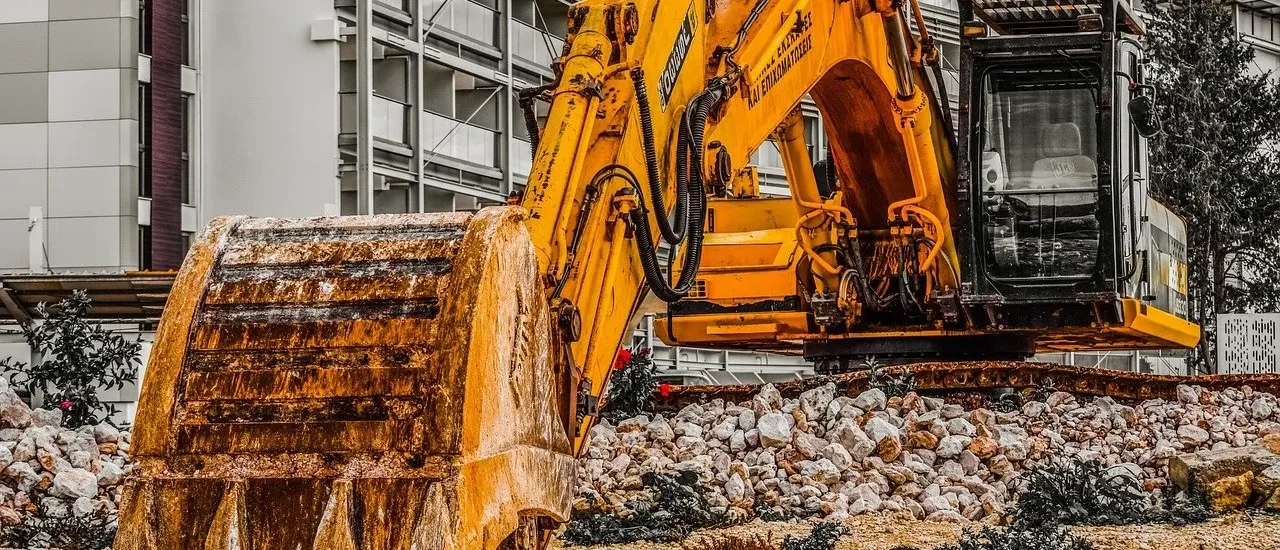Heavy equipment is crucial in construction, mining, agriculture, and other industries. These devices are made to perform hard jobs like grading, lifting, digging, and hauling. But like any complicated machinery, they are made up of a number of parts that cooperate to guarantee efficient operation. You can make better decisions when maintaining, repairing, or upgrading your machinery if you are aware of the various parts of heavy equipment and how they work. When maintaining your machinery, it’s crucial to regularly inspect heavy equipment parts to ensure that every component, from the hydraulic system to the engine, is functioning properly to prevent costly breakdowns. This comprehensive guide will explore the essential parts of heavy equipment, their functions, and how they contribute to overall performance.
1. The Engine: The Heart Of The Machine
At the core of every heavy machine lies the engine, which provides the power necessary to drive the equipment. The engine powers the hydraulic systems, runs the electrical components, and transforms fuel into mechanical energy. Whether diesel or gas-powered, engines vary in size and specifications depending on the type of equipment and its intended use.
Regular maintenance of the engine is crucial, as it ensures optimal fuel efficiency and performance. Keeping the engine well-maintained involves routine checks on air and fuel filters, oil levels, and coolant systems. If the engine isn’t functioning properly, the entire machine’s performance will be affected, leading to reduced productivity and costly downtime.
2. Hydraulic Systems: Powering Movement
Hydraulic systems are responsible for the movement of many components within heavy machinery. These systems create force using fluid power, which enables the machinery to carry out operations like pressing, digging, and lifting. Hydraulic systems consist of components such as hydraulic pumps, cylinders, motors, valves, and hoses that work together to generate and control the force needed for various operations.
The key to a well-functioning hydraulic system is ensuring that it is free from contaminants and maintaining proper fluid levels. Regular inspection of hydraulic hoses, seals, and cylinders can prevent leaks and breakdowns.
3. Undercarriage: The Foundation Of Mobility
The undercarriage is the foundation of a heavy machine, responsible for its mobility. This includes parts like the tracks, rollers, sprockets, and idlers, which allow the equipment to move over rough terrain. Particularly for track loaders, bulldozers, and excavators, the undercarriage is crucial to the machine’s stability and maneuverability.
Proper maintenance of the undercarriage is essential for maximizing the lifespan of the equipment. Performance problems can be avoided by looking for wear indicators, such as broken or cracked tracks and making sure the tracks are properly tensioned. Regular lubrication and track adjustments are necessary to reduce wear and tear.
4. Electrical Components: Keeping The Machine Functional
Modern heavy equipment is heavily reliant on electrical systems to power various functions, such as lighting, communication devices, and control systems. These systems include the battery, alternator, wiring, and sensors. Electrical components also play a crucial role in controlling more advanced features, such as automated systems, GPS, and monitoring systems that track machine performance.
Maintaining the electrical system involves checking connections, inspecting the battery, and replacing worn or corroded wiring. Electrical failures that could interfere with machine operations can be prevented by routinely testing the system and making sure that all fuses and circuit breakers are operational.
5. Steering And Suspension Systems: Ensuring Smooth Operation
The steering and suspension systems of heavy equipment are vital for controlling the direction and ensuring a smooth ride, especially when navigating rough terrain. The steering system includes components like the steering wheel, linkages, and hydraulic cylinders, while the suspension system absorbs shocks and vibrations that occur during operation.
The suspension system, often made up of springs, shocks, and struts, is crucial for maintaining stability when operating on uneven surfaces. The handling and safety of the equipment may be impacted by wear or misalignments found during routine inspections of the steering and suspension parts.
6. Tires And Tracks: The Contact With The Ground
The tires or tracks of a heavy machine are the only parts that come into direct contact with the ground. Tires are typically found on wheeled equipment such as dump trucks and graders, while tracks are used on tracked vehicles like bulldozers and excavators. Both types of components are essential for the equipment’s performance, as they provide traction, stability, and mobility.
Conclusion
Understanding the different heavy equipment parts and their functions is essential for ensuring the long-term success of your machinery. Every part of your equipment, from the hydraulic system to the engine, is essential to its overall effectiveness and performance. By performing regular inspections, maintenance, and replacing worn-out parts, you can keep your machinery running efficiently, reduce downtime, and avoid costly repairs.



